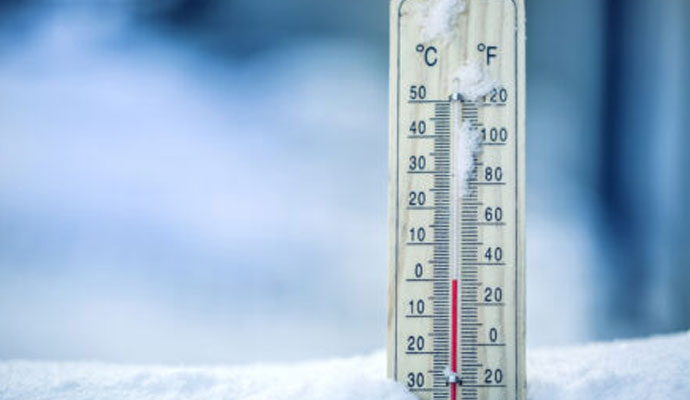As the chill of winter sets in, keeping your home warm and cozy becomes a top priority. However, increased energy usage during these colder months can lead to soaring energy bills. The good news is that there are numerous strategies you can implement to reduce your energy consumption and keep your bills in check without sacrificing comfort. Here are 10 effective ways to save on energy bills this winter.
1. Optimize Your Heating System
Regular Maintenance
Ensure your heating system is running efficiently by scheduling regular maintenance. Clean or replace filters monthly to improve airflow and reduce energy consumption. A well-maintained system operates more efficiently, lowering your energy bills.
Programmable Thermostats
Invest in a programmable thermostat to better control your heating schedule. Set the temperature lower when you’re asleep or away from home, and have it warm up just before you return. This prevents unnecessary heating and can lead to significant savings.
2. Insulate Your Home
Attic and Walls
Proper insulation is crucial in retaining heat. Check your attic and walls for adequate insulation levels. Adding more insulation can prevent heat from escaping, reducing the need for continuous heating.
Windows and Doors
Seal any gaps around windows and doors with weatherstripping or caulking to prevent drafts. Consider using thermal curtains to add an extra layer of insulation, keeping the cold out and the warmth in.
3. Use Energy-Efficient Lighting
LED Bulbs
Switch to LED bulbs, which use up to 80% less energy than traditional incandescent bulbs and last significantly longer. This simple change can reduce your lighting costs throughout the winter months.
Maximize Daylight
Take advantage of natural light during the day by opening curtains and blinds. Not only does this brighten your home, but it also reduces the need for artificial lighting.
4. Manage Your Water Heating
Lower the Thermostat
Set your water heater to 120°F (49°C). This temperature is sufficient for most household needs and prevents unnecessary energy usage.
Insulate the Water Heater
Insulate your water heater and the first few feet of hot and cold water pipes. This helps retain heat, reducing the energy required to keep your water warm.
5. Utilize Smart Power Strips
Many electronic devices consume energy even when they’re turned off, a phenomenon known as “phantom load.” Smart power strips cut off power to devices when they’re not in use, eliminating wasted energy and lowering your bills.
6. Dress Warmly and Use Blankets
Instead of cranking up the thermostat, dress in layers and use blankets to stay warm. This can significantly reduce your reliance on heating, leading to lower energy consumption and bills.
7. Take Advantage of Natural Heat
Open Curtains During the Day
Let the sunlight in by opening curtains and blinds during sunny days. Sunlight naturally warms your home, reducing the need for additional heating.
Close Curtains at Night
At night, close curtains to provide an extra layer of insulation against the cold, helping to keep the warmth inside your home.
8. Maintain Your Appliances
Efficient Use
Use appliances like dryers and dishwashers during off-peak hours to take advantage of lower energy rates, if your utility provider offers them.
Energy-Efficient Models
Consider upgrading to energy-efficient appliances that consume less power. Look for the ENERGY STAR label when purchasing new appliances to ensure maximum efficiency.
9. Reduce Space Heating Costs
Zone Heating
Focus heating on the rooms you use most by closing vents and doors to unused areas. This allows you to maintain comfort where it matters without wasting energy on empty spaces.
Use Space Heaters Wisely
If you use space heaters, choose energy-efficient models and use them in the rooms you’re occupying. Ensure they’re turned off when not in use to prevent unnecessary energy consumption.
10. Consider Renewable Energy Options
Solar Panels
Investing in solar panels can reduce your reliance on traditional energy sources. While the initial investment can be significant, the long-term savings and environmental benefits make it a worthwhile consideration.
Other Renewable Sources
Explore other renewable energy options like wind or geothermal energy, depending on your location and feasibility. These alternatives can provide sustainable energy solutions and lower your energy bills over time.
Conclusion
Winter doesn’t have to mean skyrocketing energy bills. By implementing these 10 effective strategies, you can maintain a warm and comfortable home while keeping your energy costs under control. Not only will these practices help you save money, but they also contribute to a more sustainable and energy-efficient lifestyle. Start making these changes today and enjoy a cozy, cost-effective winter season!
Tips for Implementation
- Start Small: Begin with the easiest changes, such as switching to LED bulbs or adjusting your thermostat, and gradually incorporate more strategies.
- Track Your Usage: Use energy monitoring tools to identify which areas of your home consume the most energy and target them for improvements.
- Stay Informed: Keep up with the latest energy-saving technologies and incentives offered by utility companies or government programs.
Saving on energy bills during winter is achievable with a combination of mindful habits and strategic investments. Embrace these tips and enjoy a warmer, more economical winter season!

